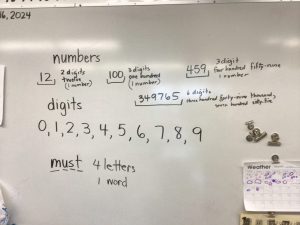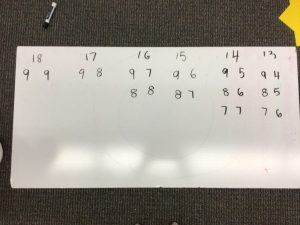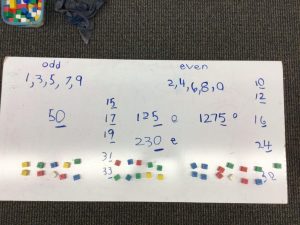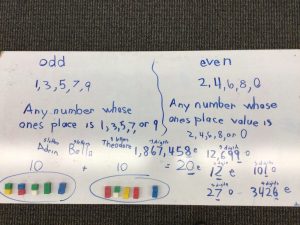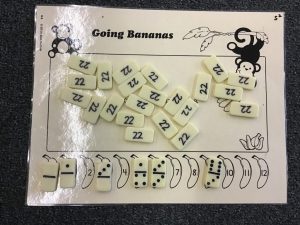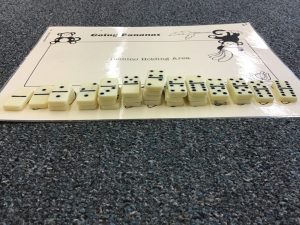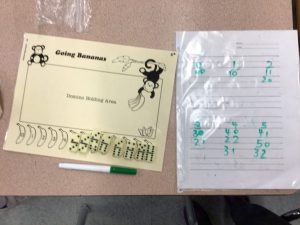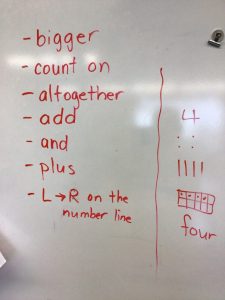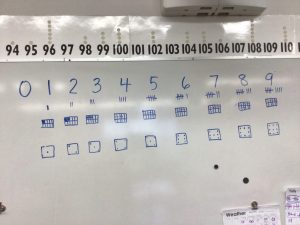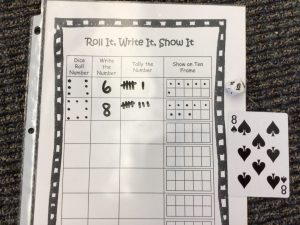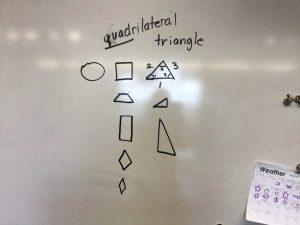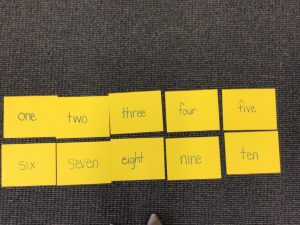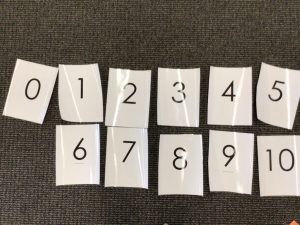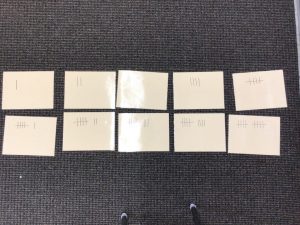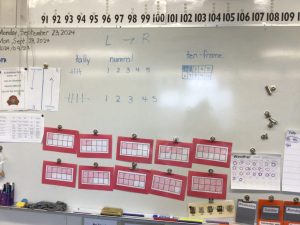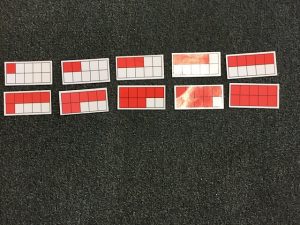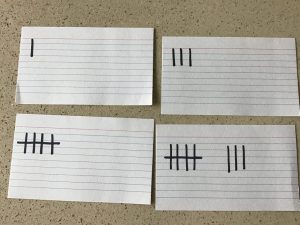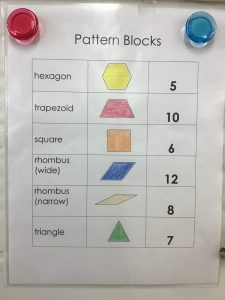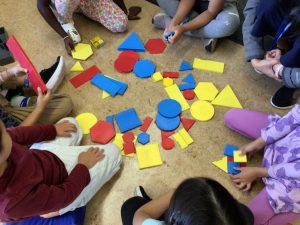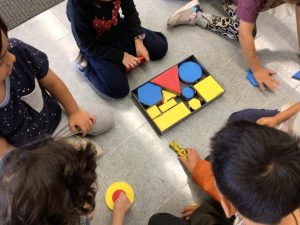Our Learning (Math)
Single Digit Pairs
Digits are the single numeric symbols similar to letters that we used in English. When we put digits together, they make numbers similar to letters together making words. However, the digits 0 to 9 are both digits and numbers.
We are now looking at single digit pairs for numbers up to 18
Odd and Even
During the week of November 18, we explored our study of mathematics a little deeper. A characteristic a number has is that they are either odd or even. Numbers are either odd or even, and do not flip flop back in forth depending on the day. That’s what makes mathematics more predictable, unlike all the rules to the exception in the English language. We began our conversation by looking at each individual from one to thirty and decided whether everyone in the number had a partner or not. Then we lumped all the numbers without the partners in one group and lumped all the numbers who all had partners in another group. We discovered that all the numbers whose last digit (ones digit or place value) ended in 1, 3, 5, 7, or 9 were in one group, and all the numbers whose last digit (ones digit or place value) ended in 2, 4, 6, 8, or 0 belonged to another group. The mathematical definition are as follows:
-An odd number is any number whose ones digit is 1, 3, 5, 7, or 9
-An even number is any number whose ones digit is 2, 4, 6, 8, or 0
Dominos
The dominos are essential two dice that are “attached” together. We added the pips on the dominos to get a bigger number.
Domino Addition
During the week of Nov. 25, we began looking more closely at the pairs of pips on each domino. This is what we saw.
Adding
The symbol ‘+’ is known as the ‘plus’ sign but there are other words and concepts associated with it. Here is what we learned.
Making 10s
It is important to understand that there are many different ways to make a number. Having that understanding contributes to having a strong number sense and a good foundations of mathematics. The students worked in groups to create different groups that make 10.
Showing What We Know (Representing Numbers)
During the week of Oct. 21, we learned a game to show what we have been learning with respecting to showing the numbers from zero to ten by playing a game. Either using a decahedron die or a deck of cards (where the face cards are equivalent to one), we show the number in four ways (pips on a domino or die, the numeric symbol, tally marks, or ten frame).
Mathematical Observations
During the week of Oct. 15, while doing the calendar activity, we talked briefly about shapes. on our number of days at school chart, we put a red circle around the groups of 2s, a yellow triangle on the groups of 5s, and a blue square on the groups of 10s. We noticed that triangles have three angles and three sides, and quadrilaterals have four angles and four sides. There are many different kinds of quadrilaterals. Circles are round and have no beginning or end and is continuous.
Number Formation
As with printing proper letters, printing numbers is also an important skill. The concept of reading and writing left to right, up to down helps to build fluent readers. To help them learn how to print the proper numeral formation, I have taught them a rhyme to help them. We have practiced them using our whole body, writing with our fingertips, and finally printing them on lined sheets. We have talked about digits being the same size as upper case letters so they are “tall”.
- A line down from the sun, makes the number one (1)
- Around and back choo choo, makes the number two (2)
- Around the tree, around the tree makes the number three (3)
- Down and across and down once more, makes the number four (4)
- Down and around and back for a drive, makes the number five (5)
- Like a monkey doing tricks, makes the number six (6)
- Straight across and down from heaven, makes the number seven (7)
- Down and around and back through the gate makes the number eight (8)
- Circle around, go down the line makes the number nine (9)
Other Forms of Subitization
 Pips on a die or domino up to 9
Pips on a die or domino up to 9
More Subitization
Continuing with our learning about subitizing, I have introduced the concept of the “Power of Ten” or ten-frames. We have been looking at grid boxes that have ten boxes (two rows of five boxes each) and recognizing the corresponding number. I would like them to become familiar with recognizing from 1 to 10 just by looking at the coloured squares and not just physically counting the coloured squares. For example, if they see three boxes coloured, it symbolizes 3, or if they see eight boxes coloured, it symbolizes 8. This helps us to see that each row has five and therefore looking a complete row has five coloured boxes (5) and having two more will make it seven (7). Ten-frames also reinforces the idea of left to right, top to bottom.
Subitize:
As humans, it is difficult to look at a bunch of things and be able to recognize more than five or six things at a glance without having to physically count each thing. Therefore, being able to subitize, looking at a quantity of things and know how many there are without physically counting out each thing, is an important skill to have. For example, if we roll a die, there are between one and six dots on each of its sides. If we were to roll a six, it is easily recognizable without having to count each dot. As an adult, this is a skill that we have built up over time. Teaching children the skill to subitize is important so that they are able to count on and not always start back at one to find out how many there are. In addition to die/dice, tally marks also a method of counting with subitization.
Shapes:
As part of their math tool bag, each student has a bag of pattern blocks. The students can play with the pattern blocks as part of their morning activity or when they have free-time. I believe that using the correct mathematical terminology is important so I have taught them the names of the shapes. Each student has a bag of pattern blocks containing a variety of shapes with specified quantities that they count before and after playing with them. The picture below is the legend they use to ensure that they have all the pieces.
Attribute Blocks
We played a game using the attribute blocks. The dice indicate what characteristics to look for when choosing the correct shape.
